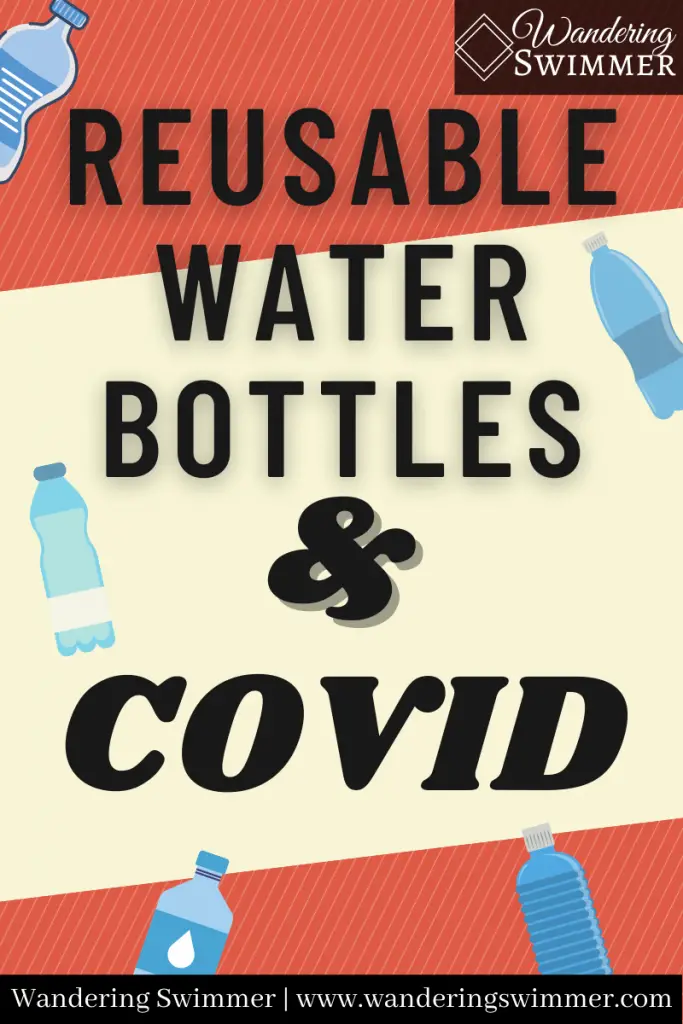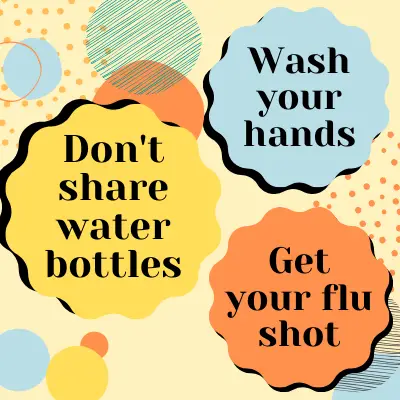Staying hydrated is always important when you’re working out. And while most people will grab their normal water bottles without a thought, some might wonder if it’s okay to use their reusable water bottles during COVID.
Disclaimer: These are only my opinions, thoughts, and observations contained in this post. They are provided only for informational purposes and shouldn’t be used or considered as medical advice. I’m not a doctor or medical practitioner. I encourage you to speak with your doctor or health care provider if you have questions.
Disclosure: This post may contain affiliate links, meaning I earn a small commission at no cost to you if you purchase something through one of my links. As an Amazon Associate, I earn from qualifying purchases. Please check out my disclosure page for more information.

Are Reusable Water Bottles Safe?
They can be safe to use. But, it’s provided you take certain steps to ensure your safety.
According to the CDC, the coronavirus is a respiratory virus. It is found in saliva and mucus and is contracted when you come in contact with contaminated droplets. These are spread when individuals with COVID sneeze, cough, talk, etc.
Due to the nature of how the virus spreads, you can continue to use your reusable water bottles.
However, it should be stressed that just because reusable water bottles are safe to use, doesn’t mean that you should share them. Sharing a water bottle with someone infected with the coronavirus increases the chance for you to catch the virus.
Although you shouldn’t be sharing water bottles even if we weren’t in the middle of a pandemic. 🙂
Reusable Water Bottle Best Practices
1. Wash Your Water Bottle Frequently
Again, regardless of being in a pandemic or not, you should always wash your water bottles. Not just when they start to smell, but frequently.
At the pool or the gym, you encounter dozens of bodies in an enclosed area. This increases the chance of contamination and washing your water bottle frequently will help reduce the chance of getting sick.
Related articles:
- Swimming After COVID (And How it Might Look)
- Surviving Quarantine When Not Swimming
- How to Return to the Pool After a Long Break
- 9 Easy Tips for Swimming During COVID
If possible, aim to wash your water bottle daily. Usually, after your workout to lower chances of infection.
Not sure how to wash your water bottle? The CDC offers guidance when it comes to washing dishes and bottles.
Scrub the bottle with hot, soapy water. Don’t focus on just the inside or outside of the bottle. Make sure you get them both. And thoroughly clean the mouthpiece and straw (if you have one).
Once done, let it air dry and it’s ready for use!
Stores and online retailers sell specialized brushes to help clean the inside of a water bottle, along with the straw. I use OXO Good Grips Water Bottle Cleaning Set to clean every bit of my reusable water bottle 🙂
2. Don’t Share Your Water Bottle
It’s tempting, I know. It comes almost second nature to most swimmers to share a water bottle. Just crack it open and pour the water into someone’s mouth.
Yes, it probably seems safer than drinking directly from someone else’s water bottle, but you can still get sick from doing it. Or, you can get someone else sick by sharing your water bottle that way.
Related articles:
- How to Do Dryland Workouts at Home
- Dryland Workouts Without Weight at Home
- Best Dryland Equipment for Home
While it might seem harsh, it’s best practice to not share your water bottle at all. In any shape or form. Because there’s always a chance that you’ll pass something along. Whether that’s the flu, mono (mononucleosis), or even the coronavirus.
You can avoid forgetting your water bottle at your next swim practice by packing your bag well before the start of your next practice. Keep your filled up water bottle next to your bag and you’ll reduce the chance of forgetting it!

3. Fill Your Water Bottle up at Home
Probably one of the harder habits for me to break is filling up my water bottle at the pool. It’s easy to grab it from the car and just fill up at the water fountain there.
With COVID, it’s time for a change in that habit.
Most locations have already blocked access to water fountains to help reduce the spread of the virus. Or, they highly encourage you to fill up your bottle before heading out.
It might seem trivial but for some people, little steps can go a long way. One easy step to protect yourself is to fill up your water bottle at home instead of at the gym or pool.
As of this posting, I couldn’t find anything from the CDC about using water/drinking fountains. However, it wouldn’t hurt to avoid them altogether by simply filling up your bottle at home.
If you’re concerned that you’ll forget, just remember that you should be washing your water bottle daily 🙂 Once it’s been cleaned, fill it up and set it next to your bag for your next practice.
Closed/Flip Lid Water Bottles
Call me a bit picky, but I’m very particular about what reusable bottle I use at swim practice. Anything that will spill if it gets knocked over is out.
And if I have to unscrew the lid to get a drink of water with only 10 seconds rest in a set, we’re going to have issues, haha.
That leaves a few options. A flip lid, a squeeze bottle, or a sliding water lid.
For purely personal reasons, i.e., I hate getting sick, I tend to stick with water bottles with flip-top lids. Two big reasons I pick this kind over the others.
- Easy and quick to use when you need a drink of water
- The drinking piece (you know, the part where your mouth goes) is covered when not being used
The first reason is a perk for me. The second reason though is the biggest reason I only use bottles with this lid. I don’t like the mouthpiece being exposed to someone coughing, sneezing, or even spitting on it.
Paranoid? Maybe. But as I said above, I hate getting sick and if it gives me peace of mind, then I’m okay with someone thinking I’m weird. We all have our weird quirks after all. It makes us human 🙂
My go-to reusable bottle is a 32oz Contigo. It has an easy handle at the top to hold and can last through my longer practices without issue. And yes, it comes with a flip lid.
I will note that due to it being poolside for about 4ish hours a day, mold can build up if I don’t wash it frequently. And it does have a weird trick where it becomes a literal geyser under pressure. Such as in heat or when I’m flying.
In Closing
Regardless of what type of water bottle you use, make sure you’re smart with your habits and actions. Clean your water bottle frequently and don’t share it with others.
These are all small and simple steps to take to stay healthy, but it doesn’t mean they’re not important. Your health and the health of others around you is always important. So if you don’t want to worry about your health, then take into consideration the health of those around you.
Your teammates and those in the gym with you will appreciate it.
As always, to safe and healthy swimming!
Chevron
BonusContent:
Swimming After COVID-19 (And How it Might Look): For swimmers, returning to the pool and swimming after COVID-19 will probably look different than what we’re used to.
Should I Quit Swimming Because of COVID-19? If you’re debating leaving the sport but still aren’t 100% sure, here are four things to consider before you decide to quit swimming because of COVID-19.

Want to Improve at the Pool?
Join swimmers and swim parents to receive my free newsletter and receive a free Swimming Glossary e-book as a thanks!
Every month you’ll receive tips and coaching to help you find success at the pool.